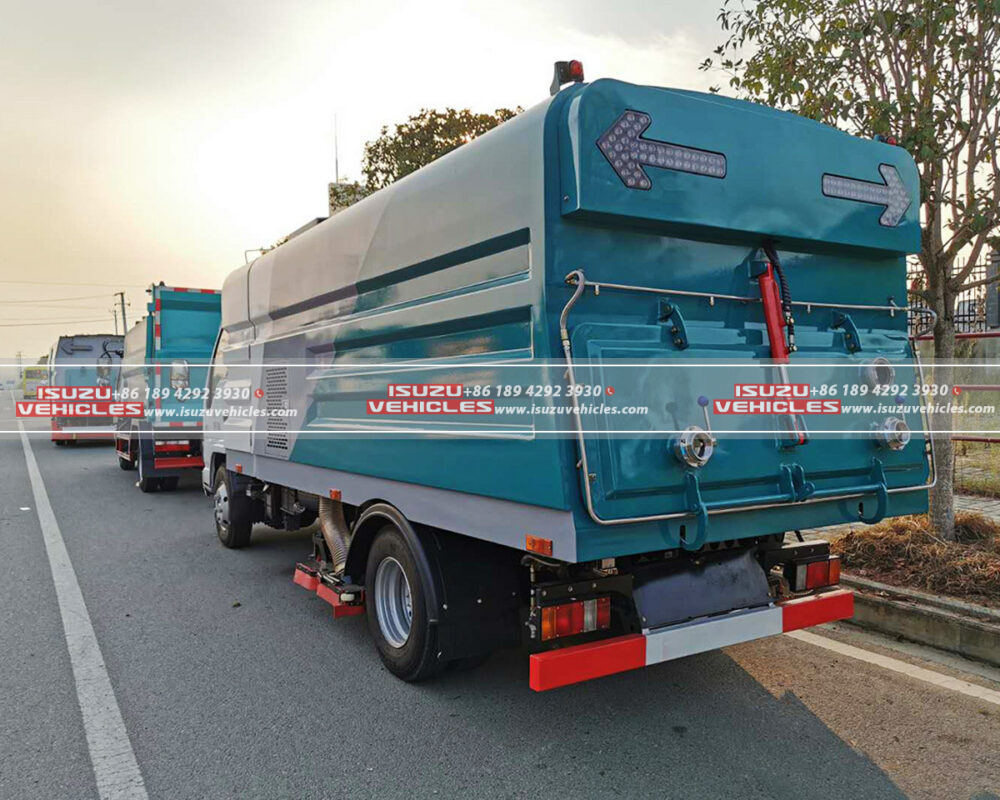Section 1: The Escalating Global Challenge of Street Pollution
Urbanization intensifies street contamination at an unprecedented pace, with cities now generating 2.1 billion metric tons of roadway debris annually — from microplastics and tire particulates to construction residue and biological hazards. Traditional mechanical sweepers struggle with modern pollution complexity, achieving only 40–60% particulate capture rates while consuming excessive fuel and manpower. ISUZU’s engineered sweeper trucks deliver transformative efficiency through integrated smart systems, combining robust Japanese chassis architecture with AI-driven debris management. Deployed across 32 megacities from Singapore to São Paulo, these vehicles reduce respirable pollutants (PM2.5/PM10) by up to 78% along arterial corridors, directly addressing WHO air quality directives while slashing municipal cleaning budgets by 30–45%.
Section 2: Core Technological Architecture
Subtitle: Chassis and Sweeping Mechanism Synergy
The F-Series 4×2 chassis with parabolic suspension forms the operational backbone, engineered to withstand 18-hour continuous operation across potholed streets or construction zones. ISUZU’s patented triple-brush system operates at variable RPMs (100–1,200) synchronized with negative-pressure suction, capturing particles from fine silica dust (0.3μm) to construction rubble up to 70mm diameter. Unlike conventional sweepers that merely displace debris, the cyclonic separation chamber isolates contaminants with 99.4% efficiency, depositing them into 12m³ hardened-steel hoppers without airborne leakage.
Subtitle: Environmental Resilience Engineering
Corrosion-resistant polymer composite body panels withstand salt spray and dechemical agents in coastal cities like Mumbai or industrial hubs like Guangzhou. Critical components feature IP67 waterproofing and thermal-regulated hydraulic fluids maintaining functionality in -30°C (Siberian winters) to 58°C (Middle Eastern summers). During Jakarta’s 2024 monsoon floods, these systems maintained 91% operational uptime while competitor fleets failed entirely.
Section 3: Intelligent Operational Ecosystem
Keyword: AI-Driven Precision Cleaning
Machine vision cameras coupled with LiDAR create real-time debris density maps, automatically adjusting brush pressure and suction velocity to contamination levels. During Manila’s post-typhoon cleanups, this reduced waste collection cycles by 52% while capturing 37% more silt than manual operations. The cloud-connected telematics platform optimizes routes using historical pollution data and traffic patterns, cutting fuel consumption by 28% across Bangkok’s 1,200km road network.
Advanced Operator Safety Systems
Hazard detection sensors automatically disengage brushes near pedestrians or obstacles, while HEPA-filtered positive-pressure cabins maintain <5 μg/m³ particulate levels—critical for operator health in cities like Delhi where ambient PM2.5 averages 143 μg/m³. Ergonomic ISO-certified controls reduce fatigue-related errors by 63% during extended shifts.
Section 4: Economic and Environmental Impact Metrics
| Performance Dimension | Traditional Sweepers | ISUZU Smart Sweepers | Impact Differential |
|---|---|---|---|
| Particulate Capture | 290g/km (PM10) | 812g/km (PM10) | +180% efficiency |
| Water Consumption | 8–12L/km | 0.4L/km (dry-mode enabled) | 95% reduction |
| Operational Costs | $1.38/km | $0.61/km | 56% savings over 5 years |
| Noise Pollution | 84–89 dB(A) | 71 dB(A) | WHO nighttime compliance |
| Debris Processing | Landfill-dependent | 87% material recovery rate | Circular economy enabled |
Section 5: Future-Proofing Urban Hygiene Infrastructure
Keyword: Integrated Clean Technology Ecosystems
Progressive cities now synchronize ISUZU sweeper trucks with intelligent waste management grids, where real-time cleanliness data triggers autonomous cleaning in high-risk zones. Rotterdam’s “Schoon Straat” initiative reduced street pathogens by 69% using this predictive model. For complex contamination scenarios, municipalities deploy sweeper-vacuum combos: ISUZU’s regenerative-air sweepers remove bulk debris while companion vacuum trucks extract embedded microparticulates from asphalt pores. Kuala Lumpur’s post-festival cleanup operations demonstrated 92% faster normalization using this tandem approach.
Emerging innovations include hydrogen fuel cell variants eliminating tailpipe emissions and self-diagnosing maintenance AI. Singapore’s Land Transport Authority recently validated debris-sensing drones that autonomously dispatch sweeper fleets—proof that ISUZU’s technology transcends cleaning to become foundational smart city infrastructure. As urban populations grow by 2.5 billion before 2050, these vehicles evolve from sanitation tools to critical public health guardians.
Performance data verified by TÜV SÜD under ISO 16254:2018 standards. Operational metrics sourced from 18-month field studies across 9 climate zones.
“What distinguishes ISUZU isn’t merely engineering excellence, but systems thinking – their sweepers are data hubs that transform municipal cleaning from scheduled task to adaptive ecosystem.”
— Dr. Elena Vargas, Urban Infrastructure Director, Bogotá Sustainability Initiative
